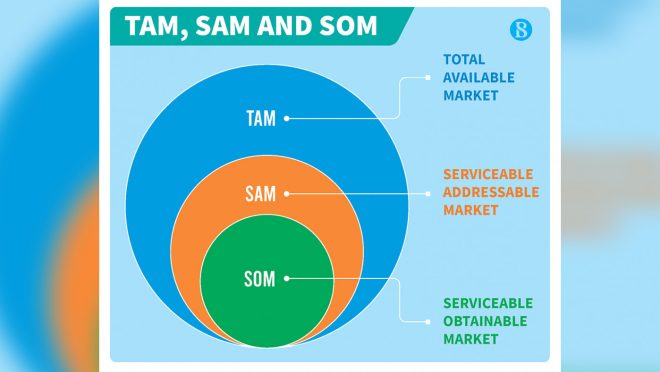Filter your idea through a marketing funnel first
When exploring new markets or introducing products and services, it is crucial to grasp market potential and opportunities. Three key market analysis concepts are Total Addressable Market (TAM), Serviceable Available Market (SAM), and Serviceable Obtainable Market (SOM)
Filter your idea through a marketing funnel first
When exploring new markets or introducing products and services, it is crucial to grasp market potential and opportunities. Three key market analysis concepts are Total Addressable Market (TAM), Serviceable Available Market (SAM), and Serviceable Obtainable Market (SOM)

One feedback that echoes across investors and business competition judges is “It’s an idea, not a business.” But as exciting as ideation is, truth be told, it is the first of many steps in making a viable business plan.
So, what makes an idea look viable and worthy of implementation? Numbers — of people and profit. So, an entrepreneur has to quantify their dream to convey a lucrative opportunity.
A marketing (or sales) funnel quantifies exactly that. It covers either of two aspects — narrowing down the target demographic, or calculating how many leads can be converted into sales. For a new business that has yet to start operations, the former applies when pitching.
The most popularly used structure followed for a funnel is the TAM-SAM-SOM subset:
- Total Addressable Market (TAM) – The biggest possible subset that could be interested in the product or service.
- Serviceable Addressable Market (SAM)- The subset that can be realistically targeted for a focused marketing and sales strategy.
- Serviceable Obtainable Market (SOM) – The subset of SAM that is actually the converted customer base for the product.
Imagine an up-and-coming premium tea bag company. The starting point, the TAM, for such a company would be the total annual tea consumption in Bangladesh, i.e., 100 million kg, considering anyone who drinks tea might take an interest in the company’s product.
The SAM would be the consumption in cities like Dhaka and Chattogram, since people of a certain income bracket can afford to buy premium tea bags, and marketing it to village tea stall customers would be inefficient.
The SOM would be a percentage of that SAM — potential leads who actually turn into customers. This would give a number in kilograms consumed. Multiply that with the average price per kg of the tea bags, and an expected revenue can be projected.
Funnels, much like financials, run on assumptions. The deeper you go down the funnel, the more specific the need, the less available the data. Thus, the need for assumption. In the case above, no survey has been conducted on the consumption rate of the premium tea bag range, nor has “premium” been formally defined in any study.
We would have to operate under a reasonable and realistic assumption; the SOM would be 0.05% of SAM since people much prefer trying unique flavors in a restaurant than having it daily at home. Such claims can be backed by a survey, the small sample size of which would mean the claim is inaccurate to a degree, but leaves a positive impression on the judge that the pitcher is data-driven.
But funnels need not always follow the TAM-SAM-SOM structure. Often, the opportunity size of a product cannot be narrowed down using three subsets. In the case above, a more focused approach could be narrowing down tea drinkers to megacity dwellers, higher income class, and in the 16-35 age bracket as converted customers.
This demographic-wise funneling approach stems from the intended brand personality and goes coherently with the marketing campaigns. It is also intuitive for judges across various backgrounds. But the pitcher should provide rationale behind the choice of demographic since the assumptions are more evident here.


